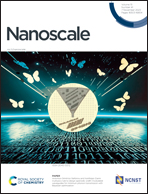Novel 2D carbon material T-graphene supported 3d transition metal single atoms as efficient oxygen reduction catalysts†
Abstract
Carbon-based support anchored 3d transition metal (TM) single atom catalysts (SACs) have been widely considered as promising candidates for the oxygen reduction reaction (ORR), and their intrinsic activity is closely related to the geometric and electronic structures of the supports. T-graphene was predicted to have high conductivity and stability, so it may be also a promising support for loading SACs for electrocatalysis. Here, we systematically evaluate the ORR activity of T-graphene supported TM single atoms (TMN4-Tgra and TMC4-Tgra, TM = Sc–Zn) and their graphene supported counterparts (TMN4-Gra and TMC4-Gra). The TM(dxz)–O(px), TM(dyz)–O(py) and TM(dz2)–O(pz + s) orbital hybridizations between the active central metal and the *OH intermediate determine the ORR activity. Compared to graphene, T-graphene increases the d-band center (especially the β-spin state) of single atoms and reduces the *OH adsorption strength, which thus improves the ORR activity of the catalysts located in the left leg of the ORR activity volcano plot. Interestingly, we found that for the catalysts with different TMs anchored on the same support, the adsorption strength of oxygen intermediates increases with the increase of the d-band center of the active site, while for the catalysts with the same metal anchored on different supports, the adsorption strength of oxygen intermediates weakens with the increase of the d-band center of the active site, which can serve as a d-band center dependence law on supports and active sites for designing ORR catalysts.



 Please wait while we load your content...
Please wait while we load your content...